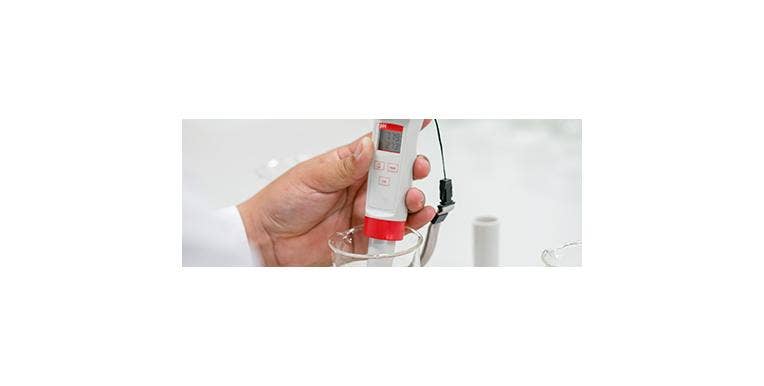5 Things to Consider When Purchasing a pH Meter
When you are purchasing a pH Meter, there are 5 essential things you should consider: Accuracy, Calibration, Electrodes, Temperature, and Portability. In this article, we seek to discuss these aspects and help guide you to make a decision that will best suit your needs.
Accuracy
Consider the accuracy needed for your reporting. A research or quality assurance application may require more accuracy than an educational demonstration. Accuracy of meters generally ranges from ±0.1 pH to ±0.001 pH. For instance, a pH meter with an accuracy of ±0.01 is a good choice for quality control or research environments, however, a pH meter with an accuracy of ±0.10 may be more affordable for a school laboratory and be adequate for their needs. An important point is that very low-cost meters often don’t last and often need replacement after a very short period of time.
Calibration
All pH meters should be calibrated to ensure the results you are reading are accurate. Calibration is achieved with the use of pH buffer solutions. The most common types of buffer solution are 4, 7, and 10 and are often colour coded red, yellow, and blue (see What is a Buffer and how does it work?). Consider purchasing a meter that uses at least a 2-point calibration and calibrates as close to your expected result as possible (e.g. for acidified foods, you will calibrate your meter with pH 4.0 and 7.0 buffers). It is possible to buy 3-point and 5-point calibration pH meters which increases the measurement range but it is unlikely you will need this unless you need to test a wide range of pH. Newer meters and testers also have much simpler single-step calibration procedures both in bench and pocket meters.
Electrode
The electrode is used to measure the concentration of hydrogen ions and is the part of the instrument that is immersed in the solution. Most pH electrodes are glass bulb electrodes. In some applications (food for example), a no-glass policy prevents users from using a glass bulb electrode. There are non-glass electrodes available for these scenarios but do come with a cost. When considering which pH meter to purchase, consider the cost of replacement electrodes as they are relatively fragile and it is likely you will need replacement electrodes over the life of your meter. It is also worth noting that some electrodes have special non-clog tips and these may be useful if you will be measuring the pH of foods that are not easily blended. There is also newer technology available such as ‘Flat-cell’ testers which are highly useful in portable environments. These are very affordable and offer accuracy and reliability.
Temperature
PH readings are affected by temperature. To get an accurate reading, the pH meter must be calibrated at the same temperature as the samples being tested (see How Does Temperature Affect pH?). More advanced meters will have automatic temperature compensation to compensate for variations in sample temperature (too warm or too cold). It is a great idea to calibrate your pH meter just before you monitor product pH, and test the pH of room-temperature samples (after equilibrium pH has been reached).
Portability
Where are you going to use your pH meter? Will you be using this in the field? Will it be used in the lab? For a highly portable pH Meter, consider a pocket or handheld meter. Although they may be small, they are generally durable and waterproof. Look for meters that are also designed to float if dropped in a water source. If you are looking for accuracy and are planning to use your pH meter in the laboratory, you may be better off considering a benchtop meter. Benchtop meters offer advanced functionality and are designed for long term reliability. Generally, the cost of benchtop meters is higher than their portable counterparts.
To summarise:
- What accuracy is required for your application – a high-end bench meter or lower cost pocket meter? What is the consistency and reliability of the meter?
- Calibration – have a fresh set of buffers, choose a meter with simple single-step calibration.
- Ensure that the electrode is of high quality and suitable for your application. Consider the new ‘flat-cell’ technology probe.
- Temperature – have your samples at room temperature before testing, select a meter with Automatic Temperature Compensation (ATC).
- Portable or Bench – What fits your budget best? Are you using it in the field, do you require it to be waterproof?


